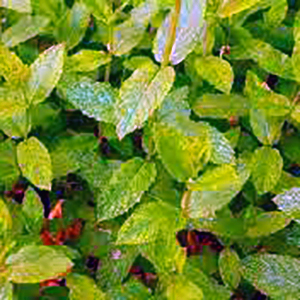Effect of different fertilizers on peppermint - Essential and non-essential nutrients, essential oils and yield

Accepted: 16 March 2022
HTML: 104
All claims expressed in this article are solely those of the authors and do not necessarily represent those of their affiliated organizations, or those of the publisher, the editors and the reviewers. Any product that may be evaluated in this article or claim that may be made by its manufacturer is not guaranteed or endorsed by the publisher.
Peppermint (Mentha x piperita L.) plant was grown in this study using different mineral fertilizers combinations. Effects of fertilizer treatments on green and drug herb yields, herb essential nutrients (N, P, K, Ca, Na, Mg, Fe, Zn, Mn, Cu), essential oil yield, essential oil components (menthol, menthone, 1,8 cineole and menthofuran) and non-essential elements (heavy metal) (Pb, Ni, Co, Cr and Cd) were determined in two successive years (2011-2012). The highest green and drug herb yields were obtained from mono ammonium phosphate (MAP) treatments (24,980 kg ha–1 and 3070 kg ha–1) in the first year and from 15:15:15 treatments (16,950 kg ha–1 and 3080 kg ha–1) in the second year. Nutrient elements nitrogen 2.70% in MAP application, phosphorus 0.55% in mono potassium phosphate (MKP) application, potassium 3.12% in MAP application, calcium 1.47% in di ammonium phosphate (DAP) application, magnesium 0.36% in 15:15:15 application, iron 106 mg kg–1 in 15:15:15 application, copper 11.83 mg kg–1 in MAP application, zinc 35 mg kg–1 in MKP application and manganese 89 mg kg–1 in MAP application the highest value were respectively obtained from treatments. Concentrations of non-essential elements (Pb, Ni, Cr and Cd) in herb were found to be below toxic values. In both years, the highest essential oil yields were obtained from MAP treatments (4.10% in the first year and 2.90% in the second year). The essential oil components of peppermint were menthol, menthone, 1,8 cineole and menthofuran and menthol was the major component in both years.
Highlights
- Nitrogen fertilizer applications increased herb yield.
- In terms of plant nutrients, mono ammonium phosphate and 15:15:15 fertilizers were more effective than other fertilizer applications.
- Heavy metal concentrations of peppermint herb were determined below the limit values.
- The main compound in peppermint essential oils was menthol in both years.
How to Cite

This work is licensed under a Creative Commons Attribution-NonCommercial 4.0 International License.
PAGEPress has chosen to apply the Creative Commons Attribution NonCommercial 4.0 International License (CC BY-NC 4.0) to all manuscripts to be published.

 https://doi.org/10.4081/ija.2022.1921
https://doi.org/10.4081/ija.2022.1921







